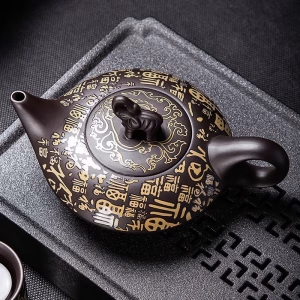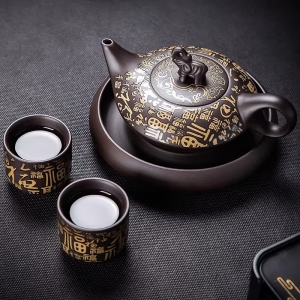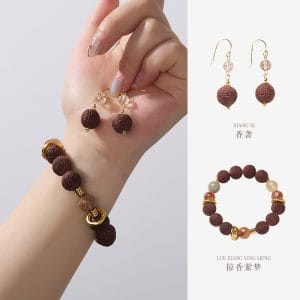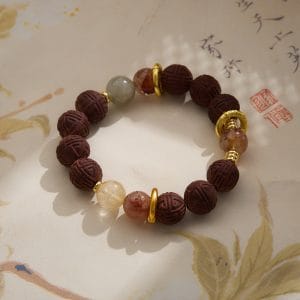Background
Chinese lanterns, with their vibrant red hues and intricate designs, have long been symbols of celebration, hope, and cultural heritage. Traditionally crafted from silk, paper, and bamboo, these luminous artifacts light up festivals, weddings, and family gatherings, casting a warm glow that transcends generations. Yet, in an era increasingly defined by environmental awareness, the question arises: how can we honor these timeless traditions while adapting to the needs of our planet? The answer lies in the creative and conscientious practice of upcycling, where discarded materials are transformed into beautiful, functional lanterns that carry forward the spirit of innovation inherent in Chinese craftsmanship.

Why It Matters
Upcycling, distinct from recycling, involves repurposing waste materials into products of higher quality or value. For Chinese lanterns, this means moving beyond conventional materials like new paper or silk and embracing items that would otherwise end up in landfills. Imagine lanterns fashioned from old fabric scraps, discarded glass jars, or even plastic bottles, each piece telling a story of renewal. This approach not only reduces waste but also infuses each lantern with a unique character, blending the old with the new in a way that feels both nostalgic and forward-thinking.
The process of creating an upcycled Chinese lantern begins with sourcing materials. Artists and DIY enthusiasts scour thrift stores, attics, and recycling bins for potential components. Fabric from worn-out clothing can be stretched over bamboo or wire frames, while glass containers might be painted with traditional motifs using non-toxic paints. Even unexpected items like bicycle wheels or vintage tin cans can be incorporated, demonstrating the limitless possibilities when creativity meets sustainability. Each lantern becomes a testament to resourcefulness, echoing the ancient Chinese value of wù jìn qí yòng—making the best use of everything.
According to a recent study by the Global Upcycling Institute (2023), upcycled products, including decorative items like lanterns, can reduce carbon footprints by up to 30% compared to new manufactured goods, primarily by diverting waste and minimizing raw material extraction. The study highlights that cultural artifacts upcycled with care not only preserve heritage but also promote environmental stewardship, making them powerful tools in the fight against climate change. This dual benefit resonates deeply in communities where tradition and modernity intersect, offering a practical path toward sustainable living.
Beyond environmental benefits, upcycled Chinese lanterns foster a deeper connection to cultural roots. In workshops and community centers, families gather to create these lanterns together, sharing stories and techniques passed down through generations. This hands-on engagement transforms the act of making into a meaningful ritual, reinforcing cultural identity while adapting it to contemporary values. The lanterns, once completed, serve as reminders of resilience and ingenuity—qualities that have always been at the heart of Chinese artistic expression.
In urban settings, upcycled lanterns are gaining popularity as eco-friendly décor for events and homes. Designers are experimenting with LED lights powered by solar energy, enhancing sustainability without sacrificing the lantern’s enchanting glow. These modern twists ensure that the lanterns remain relevant and accessible, appealing to younger generations who prioritize both aesthetics and ethics. Social media platforms buzz with tutorials and showcases, creating a global community of enthusiasts eager to blend tradition with innovation.
Ultimately, the rise of upcycled Chinese lanterns represents more than just a trend; it is a movement toward mindful consumption and cultural preservation. By reimagining waste as a resource, we honor the past while safeguarding the future, proving that even the most cherished traditions can evolve without losing their essence. As these lanterns continue to light up spaces around the world, they carry with them a message of hope, creativity, and responsibility—a beacon for a brighter, more sustainable tomorrow.
You may also like
Aladdin’s Lamp Heat-Change Purple Clay Tea Pot
Original price was: $108.00.$78.00Current price is: $78.00. Add to cartAncient Craftsmanship & ICH Herbal Beads Bracelet with Yellow Citrine & Silver Filigree Cloud-Patterned Luck-Boosting Beads
Original price was: $128.00.$89.00Current price is: $89.00. Add to cartBambooSoundBoost Portable Amplifier
Original price was: $96.00.$66.00Current price is: $66.00. Add to cartThe Palace Museum Paper-Cut Light Art Fridge Magnets: Chinese Cultural Style Creative Gift Series
Price range: $27.00 through $36.00 Select options This product has multiple variants. The options may be chosen on the product pageHandwoven Zhuang Brocade Tote Bag – Large-Capacity Boho Shoulder Bag
Original price was: $178.00.$154.00Current price is: $154.00. Add to cartAncient Craft Herbal Scented Bead Bracelet with Gold Rutile Quartz, Paired with Sterling Silver (925) Hook Earrings
Original price was: $322.00.$198.00Current price is: $198.00. Add to cart













